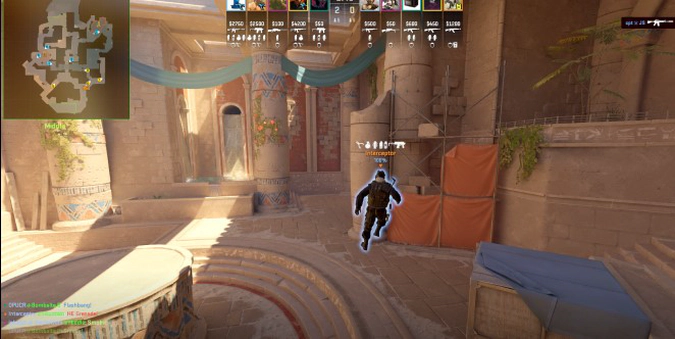Insightful Updates
Stay informed with the latest news and trends.
Shift Happens: The Surprising Science of CS2 Movement Mechanics
Unlock the secrets of CS2 movement mechanics! Discover the surprising science behind gameplay shifts and elevate your skills today!
Understanding the Physics: How CS2 Movement Mechanics Work
In the world of gaming, CS2 movement mechanics play a crucial role in how players navigate the virtual environment. Understanding these mechanics involves grasping the principles of physics that govern player movement. For instance, factors like momentum, inertia, and friction come into play when players run, jump, or strafe across different terrains. By mastering these principles, gamers can enhance their performance, making it essential for players to practice and refine their movements strategically.
One key aspect of CS2 movement mechanics is the concept of acceleration. Players start at a standstill and must accelerate to reach peak speed. This acceleration is not linear; instead, it depends on the player's inputs and the game's physics engine. Recognizing the timing and execution of movements, such as counter-strafing—the act of tapping the opposite movement key to halt momentum quickly—can give players a competitive edge. Overall, a deep understanding of these mechanics allows players to maximize their agility and effectiveness in the game.

Counter-Strike is a popular tactical first-person shooter game that emphasizes teamwork and strategy. Players can acquire various in-game items, including skins and cases, such as the Gallery Case, to enhance their gameplay experience. The game has evolved through various iterations, maintaining a dedicated player base and competitive scene.
From Strafe to Jump: Unpacking the Nuances of Movement in CS2
In CS2, the evolution of movement mechanics plays a crucial role in shaping gameplay dynamics. From the foundational principle of strafing to the advanced technique of jumping, understanding these movements enhances a player's competitive edge. Strafe movement is primarily about shifting your character's weight side to side, allowing for unpredictable maneuvering and making it harder for opponents to land shots. Mastering this essential skill not only improves your agility but also enhances your ability to shoot on the run, a vital component in high-stakes encounters.
Jumping in CS2 adds a layer of complexity to movement strategies. While it may seem simple, executing well-timed jumps can capitalize on map geometry, allowing players to reach vantage points or evade enemy fire effectively. Moreover, combining jumps with strafing creates advanced techniques like 'bunny hopping,' which can significantly increase movement speed and unpredictability. Players should practice these mechanics diligently, as the nuances of movement can often mean the difference between victory and defeat in this fast-paced environment.
What Makes CS2 Movement Unique? Exploring the Science Behind Player Dynamics
Counter-Strike 2 (CS2) introduces a movement system that significantly diverges from its predecessors, creating a fresh and dynamic gaming experience. One of the most notable aspects of CS2 movement is its physics-based mechanics, which allows players to navigate the environment with an unprecedented level of fluidity. The acceleration and deceleration of player movement are finely tuned, allowing for a more realistic simulation of motion. This intricacy not only enhances the gameplay but also adds a layer of strategy, as players must master these mechanics to gain an advantage in competitive scenarios.
The player dynamics in CS2 further contribute to its uniqueness. Every movement, from sprinting to crouching, has been meticulously designed to impact interactions within the game. For example, players can now execute precise maneuvers such as sliding and jumping that can affect their hitbox and evasion tactics during engagements. This deliberate design encourages players to explore various movement techniques while adapting to their opponents’ strategies, resulting in a more immersive and engaging game environment. As such, understanding the science behind these mechanics is key for players who aim to excel in CS2.